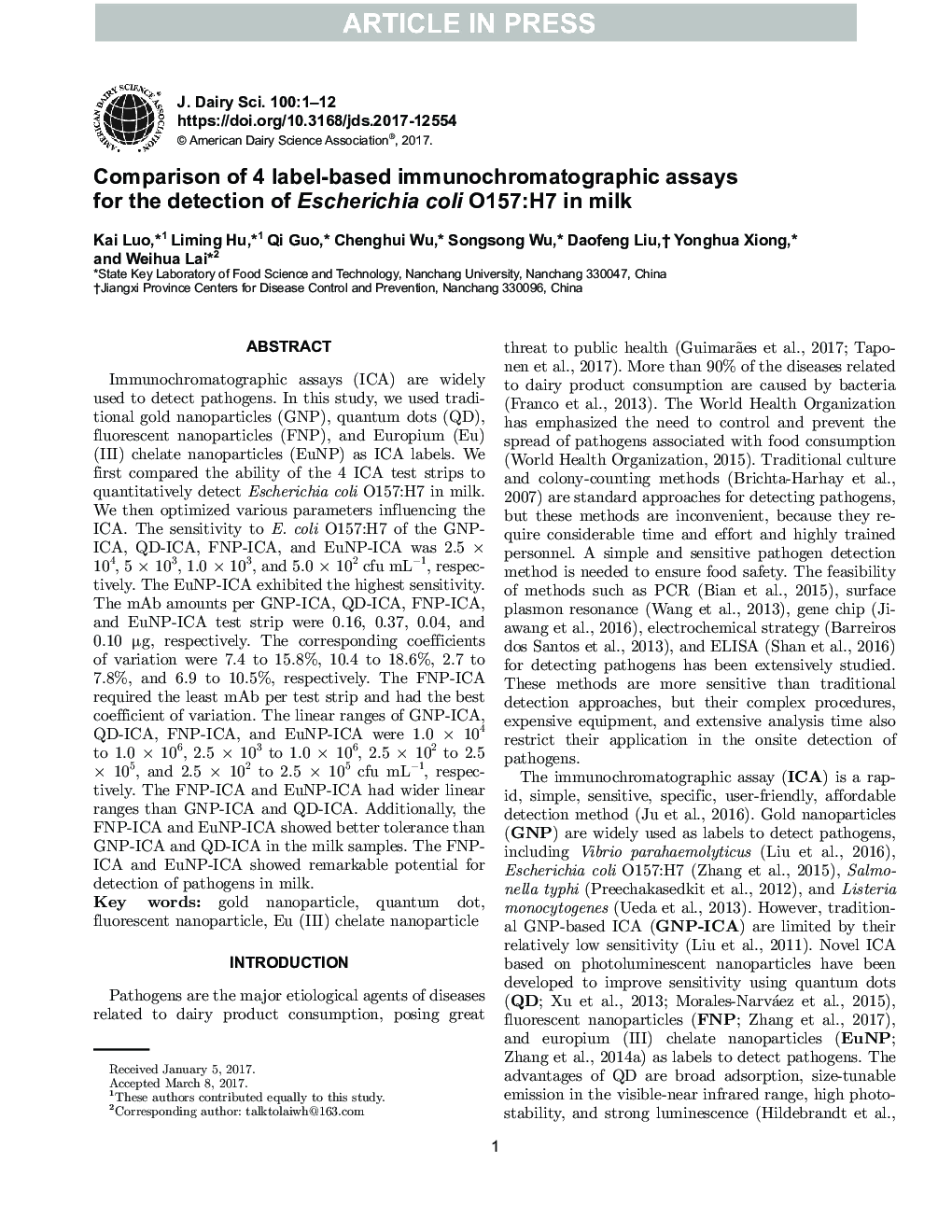| Article ID | Journal | Published Year | Pages | File Type |
|---|---|---|---|---|
| 5541727 | Journal of Dairy Science | 2017 | 12 Pages |
Abstract
Immunochromatographic assays (ICA) are widely used to detect pathogens. In this study, we used traditional gold nanoparticles (GNP), quantum dots (QD), fluorescent nanoparticles (FNP), and europium (Eu) (III) chelate nanoparticles (EuNP) as ICA labels. We first compared the ability of the 4 ICA test strips to quantitatively detect Escherichia coli O157:H7 in milk. We then optimized various parameters influencing the ICA. The sensitivity to E. coli O157:H7 of the GNP-ICA, QD-ICA, FNP-ICA, and EuNP-ICA was 2.5 à 104, 5 à 103, 1.0 à 103, and 5.0 à 102 cfu mLâ1, respectively. The EuNP-ICA exhibited the highest sensitivity. The amounts of monoclonal antibodies (mAb) per GNP-ICA, QD-ICA, FNP-ICA, and EuNP-ICA test strip were 0.16, 0.37, 0.04, and 0.10 μg, respectively. The corresponding coefficients of variation were 7.4 to 15.8%, 10.4 to 18.6%, 2.7 to 7.8%, and 6.9 to 10.5%, respectively. The FNP-ICA required the least mAb per test strip and had the best coefficient of variation. The linear ranges of GNP-ICA, QD-ICA, FNP-ICA, and EuNP-ICA were 1.0 à 104 to 1.0 à 106, 2.5 à 103 to 1.0 à 106, 2.5 à 102 to 2.5 à 105, and 2.5 à 102 to 2.5 à 105 cfu mLâ1, respectively. The FNP-ICA and EuNP-ICA had wider linear ranges than GNP-ICA and QD-ICA. Additionally, the FNP-ICA and EuNP-ICA showed better tolerance than GNP-ICA and QD-ICA in the milk samples. The FNP-ICA and EuNP-ICA showed remarkable potential for detection of pathogens in milk.
Related Topics
Life Sciences
Agricultural and Biological Sciences
Animal Science and Zoology
Authors
Kai Luo, Liming Hu, Qi Guo, Chenghui Wu, Songsong Wu, Daofeng Liu, Yonghua Xiong, Weihua Lai,
